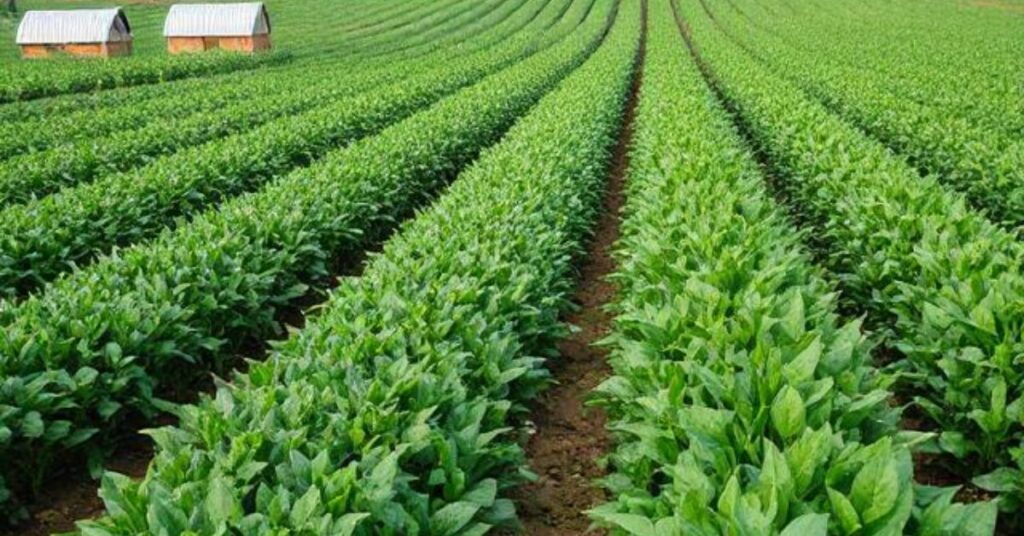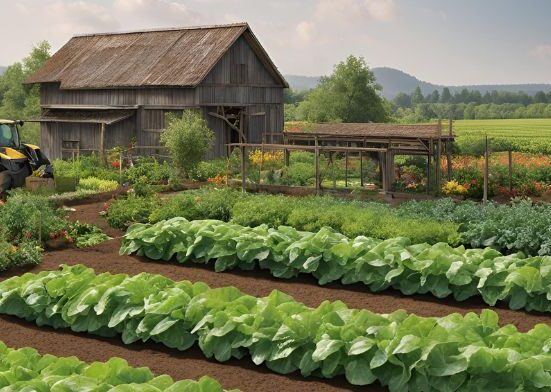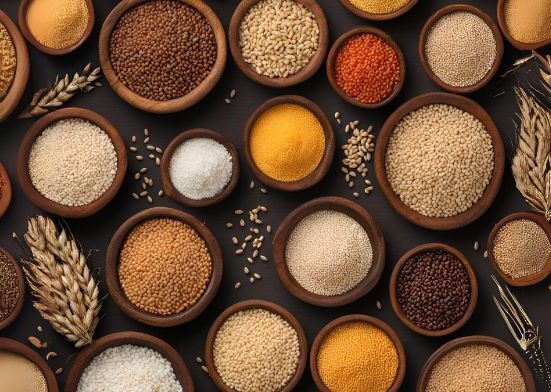Agriculture faces unprecedented challenges in an era when climate change, population growth, and resource scarcity dominate global conversations.Farmers must use fewer resources to produce more food while minimizing environmental impact. Enter hybrid farming—a revolutionary approach that blends traditional farming techniques with cutting-edge technology and sustainable practices. This blog post dives into hybrid farming, its benefits, key strategies, real-world applications, and why it’spositioned to influence how food is produced in the future.
What is a Hybrid Crop?
A hybrid crop is produced by crossbreeding two genetically distinct parent plants of the same or related species to combine desirable traits, such as higher yield, disease resistance, or environmental adaptability. Unlike traditional open-pollinated varieties, hybrid crops are created through controlled pollination, often by manually transferring pollen between selected parent plants. The resulting first-generation (F1) hybrids exhibit hybid farm or heterosis, leading to improved growth, uniformity, and productivity compared to their parents.
For example, a hybrid corn variety might combine one parent’s drought tolerance with another’s high grain output, resulting in a crop suited for challenging climates. Hybrid crops, including staples like rice and wheat and vegetables like tomatoes, are widely used in modern agriculture.However, hybrid seeds have limitations. Understanding Food Costs and Modern Farming Practices Their offspring (second generation) often lack the same vigor, requiring farmers to purchase new seeds annually rather than saving them, which can increase costs. Despite this, hybrid crops are vital for boosting food security and adapting to climate change, as they offer resilience and efficiency. They differ from genetically modified organisms (GMOs), as hybridization involves natural breeding without direct gene editing.
What is Hybrid Farming?

Hybrid farming is an innovative agricultural model integrating conventional farming methods with modern technologies and sustainable practices. It combines the best of both worlds: the time-tested wisdom of traditional agriculture (like crop rotation and organic composting) with advanced tools such as precision agriculture, hydroponics, aquaponics, and renewable energy systems. The objective is to establish a robust, effective, eco- friendly farming system that maximizes yield while minimizing environmental harm.
Unlike purely traditional or fully tech-driven farming, hybrid farming is adaptable. It tailors solutions to local climates, soil conditions, and community needs. For instance, a hybridization farming in a drought-prone region might pair drip irrigation with rainwater harvesting, while one in an urban area could combine vertical farming with rooftop gardens.
Why Hybrid Farming Matters
The United Nations predicts that there will be 9.7 billion people on the planet. billion by 2050. This growth demands a 50% increase in food production, yet arable land is shrinking due to urbanization and climate change. Traditional farming alone struggles to meet these demands, often relying on chemical fertilizers and monoculture practices that degrade soil and harm ecosystems. On the other hand, high-tech farming solutions like vertical farms can be expensive and energy-intensive, limiting their scalability.
Hybrid farming bridges this gap by offering a balanced approach. It’s sustainable, scalable, and inclusive, making it accessible to smallholder farmers in developing nations and large-scale operations. Here are some key reasons why hybrid farming is gaining traction:
- Sustainability: Hybrid farming reduces carbon footprints and preserves natural resources by integrating renewable energy, organic practices, and water-saving technologies.
- Resilience: Diversified systems are less vulnerable to pests, diseases, and extreme weather, ensuring stable yields.
- Efficiency: Precision tools like IoT sensors and drones optimize resource use, cutting waste and boosting productivity.
- Accessibility: Hybrid systems can be customized to fit various budgets and environments, empowering farmers worldwide.
Key Techniques in Hybrid Farming
Hybrid farming employs various techniques, blending old and new to create a harmonious system. Here are some of the most impactful methods:
Precision Agriculture
Precision agriculture uses GPS, IoT sensors, and drones to monitor crops and soil in real time. Farmers can track moisture levels, nutrient deficiencies, and pest activity, applying water, fertilizers, or pesticides only where necessary. This boosts yields while decreasing waste and its negative effects on the environment. For example, a hybrid farm might use soil sensors to guide irrigation while maintaining traditional crop rotation to enhance soil health.
Hydroponics and Aquaponics
Aquaponics and hydroponics, which grow plants in nutrient-rich water, and aquaponics (combining fish farming with plant cultivation) are soilless farming methods that thrive in hybrid systems. These techniques use up to 90% less water than traditional hybrid farms and can be integrated with conventional soil-based crops. Urban hybrid farms often use hydroponics for leafy greens alongside traditional plots for root vegetables.
Agroforestry
Agroforestry integrates trees with crops or livestock, creating a symbiotic ecosystem. Trees provide shade, reduce soil erosion, and sequester carbon, while crops benefit from improved soil fertility. A hybrid farm might combine agroforestry with IoT-based irrigation to optimize water use in tree-crop systems.
Renewable Energy Integration
Solar panels, wind turbines, and biogas systems power hybrid farms, reducing reliance on fossil fuels. For instance, How Can Farmers Cut Waste in Sustainable Agriculture a farm might use solar-powered pumps for irrigation while composting organic waste to produce biogas for cooking or heating.
Organic and Regenerative Practices
Hybrid farming often incorporates organic methods like composting, cover cropping, and natural pest control. Regenerative agriculture, which focuses on restoring soil health, is a cornerstone of many hybrid systems. These practices enhance biodiversity and sequester carbon, combating climate change.
Vertical Farming
In urban areas, hybrid farms leverage vertical farming—stacking crops in controlled environments—to maximize space. These systems use LED lighting and hydroponics but can also combine traditional rooftop gardens or community plots to diversify production.
Data Analytics and AI
Artificial intelligence analyzes data from sensors, weather forecasts, and market trends to guide planting, harvesting, and sales. A hybrid farm might use AI to predict crop yields while relying on traditional knowledge to select resilient crop varieties.
Real-World Examples of Hybrid Farming
Hybrid farming is already transforming agriculture worldwide. Here are a few inspiring examples:
- Edenworks (New York, USA): This urban farm combines aquaponics with vertical farming to grow microgreens and herbs. Fish waste fertilizes plants, while sensors monitor water quality, blending tech with sustainable practices.
- Sundrop Farms (Australia): In a desert, Sundrop uses solar power to desalinate seawater for hydroponic greenhouses. Traditional composting complements their high-tech setup, producing tomatoes sustainably.
- Green Skies Farm (Kenya): This smallholder farm integrates agroforestry with drip irrigation and solar pumps. Farmers grow maize and fruit trees together, using IoT sensors to optimize water use in a drought-prone region.
- The Plant (Chicago, USA): This hybrid plant combines aquaponics, anaerobic digesters, and traditional plots. Waste from one system (like fish effluent) fuels another, Intensive vs. Extensive Agriculture: A Comprehensive Comparison creating a closed-loop model.
These examples showcase hybrid farming’s versatility, from high-tech urban setups to low-cost rural systems.
Benefits of Hybrid Farming

Hybrid farming offers a multitude of advantages, making it a game-changer for agriculture:
- Higher Yields: Hybrid farms produce more food per acre by optimizing resources and diversifying crops than traditional methods.
- Environmental Protection: Reduced chemical use, water conservation, and carbon sequestration safeguard ecosystems.
- Economic Viability: Lower input costs (e.g., water, fertilizers) and higher yields boost farmer incomes.
- Food Security: Resilient systems ensure stable food supplies, even in adverse conditions.
- Community Empowerment: Hybrid farming creates jobs, fosters local food systems, and supports rural and urban communities.
Challenges and Solutions
Despite its promise, hybrid farming faces hurdles. High initial costs for technology can deter small farmers, while technical expertise is needed to manage complex systems. Additionally, integrating traditional and modern methods requires training and adaptation.
Solutions are emerging:
- Subsidies and Grants: Governments and NGOs can fund tech adoption for smallholders.
- Training Programs: Extension services and online courses teach farmers to use hybrid techniques.
- Open-Source Technology: Affordable, Best Tractor Brands for Farmers: open-source sensors and software lower costs.
- Farmer Cooperatives: Groups pool resources to invest in shared tech, like drones or solar panels.
High Yielding Crop Varieties
In the ever-evolving world of agriculture, High-Yielding Crop Varieties (HYVs) have become game changers for farmers seeking to boost productivity and profitability. These specially developed seeds offer higher outputs per acre compared to traditional varieties. Introduced during the Green Revolution, HYVs have been instrumental in transforming food security in many parts of the world.
Why Are HYVs Important?
HYVs play a crucial role in meeting the rising food demand driven by growing populations. They mature faster, resist pests better, and adapt to various climatic conditions. For farmers, this means more produce in less time, with less risk.
Examples of High-Yielding Crops
Some popular HYVs include:
- Wheat: Varieties like HD 2967 and PBW 343 offer high yields and disease resistance.
- Rice: IR64 and MTU-1010 are known for their short maturity and drought tolerance.
- Maize: HQPM-1 and Bio-9637 are favored for their high protein content and productivity.
- Cotton: Bt Cotton hybrids have significantly increased yields and reduced pesticide use.
High-yielding Crop Varieties (HYVs) are the backbone of modern agriculture. They increase food production and support farmers’ economic stability. As agricultural science advances, investing in HYVs will continue to be a vital strategy for global food security.
The Future of Hybrid Farming
The future of hybrid farming is bright, driven by the increasing demand for sustainable food and technological breakthroughs. Innovations like gene-edited crops, autonomous farm robots, and blockchain for supply chain transparency will enhance hybrid systems. Meanwhile, consumer awareness of climate change pushes demand for eco-friendly produce, incentivizing farmers to adopt hybrid methods.
Governments are also stepping up. Policies promoting renewable energy, water conservation, and regenerative agriculture align with hybrid farming’s goals. For instance, the European Union’s Green Deal supports sustainable farming practices, while India’s solar-powered irrigation schemes aid hybrid farms. By 2030, hybrid farming could dominate global agriculture, especially in regions facing resource constraints. Its ability to adapt to diverse environments—from arid deserts to crowded cities—makes it a universal solution. Hybrid farming will feed the world and heal the planet as more farmers embrace this model.
How to Get Started with Hybrid Farming

Interested in hybrid farming? Here’s how to begin:
- Assess Your Resources: Evaluate your land, water, budget, and local climate to identify suitable techniques.
- Start Small: Before scaling up, experiment with one or two methods, like drip irrigation or composting.
- Leverage Technology: Invest in affordable tools like soil sensors or solar panels, or explore open-source options.
- Learn and Network: Join farming cooperatives, What Is Agriculture A Simple Guide attend workshops, or connect with hybrid farmers online.
- Seek Support: Apply for grants, subsidies, or loans to fund your transition.
Conclusion
Hybrid farming is more than a trend—it’s a revolution. Blending tradition with innovation offers a sustainable, resilient, and inclusive path to feeding the world. Whether you’re a smallholder in Africa, an urban farmer in Asia, or a large-scale producer in North America, hybrid farming provides tools to thrive in a changing world. As we face the challenges of the 21st century, this approach will play a pivotal role in creating a future where agriculture nourishes people and the planet.Ready to join the hybrid farming movement? Start exploring, experimenting, and collaborating today. The future of food is in your hands.
FAQ
What is hybrid farming?
Hybrid farming combines traditional farming methods with modern technologies. It uses hybrid seeds or livestock to increase yield, disease resistance, and efficiency while maintaining sustainability.
Why are hybrid seeds used in farming?
Hybrid seeds enhance crop quality, improve resistance to pests and diseases, and boost productivity compared to traditional seeds, leading to better farm income.
Is hybrid farming suitable for small farmers?
Yes, hybrid farming can benefit small farmers by increasing yield per acre. However, initial seed costs and proper guidance are essential for successful adoption.
Are hybrid crops genetically modified?
No, hybrid crops are not genetically modified. They are created by crossbreeding two different plant varieties to naturally combine their desirable traits.
What are the disadvantages of hybrid farming?
Hybrid farming can involve higher seed costs, dependency on seed companies, and sometimes reduced seed-saving ability for future planting, which may affect traditional practices.







